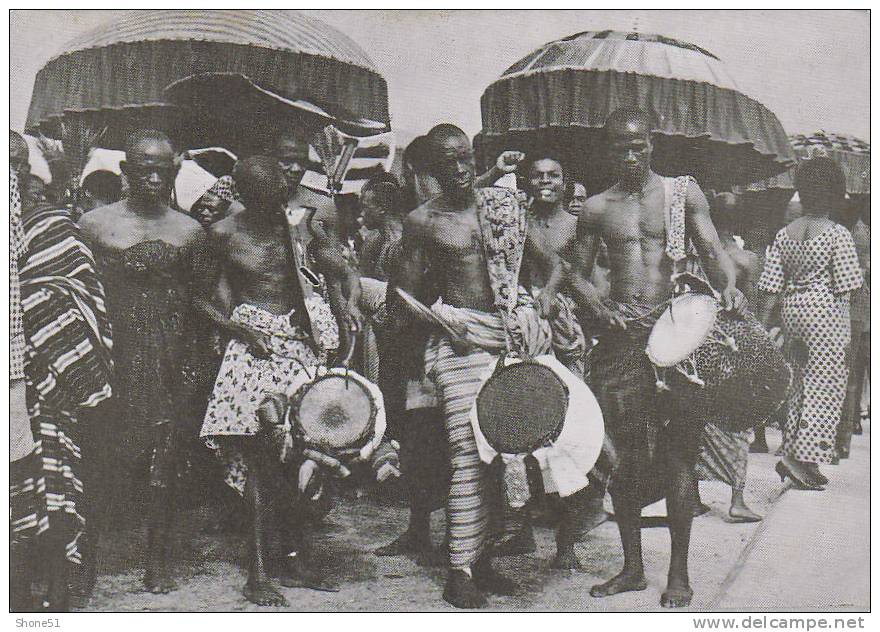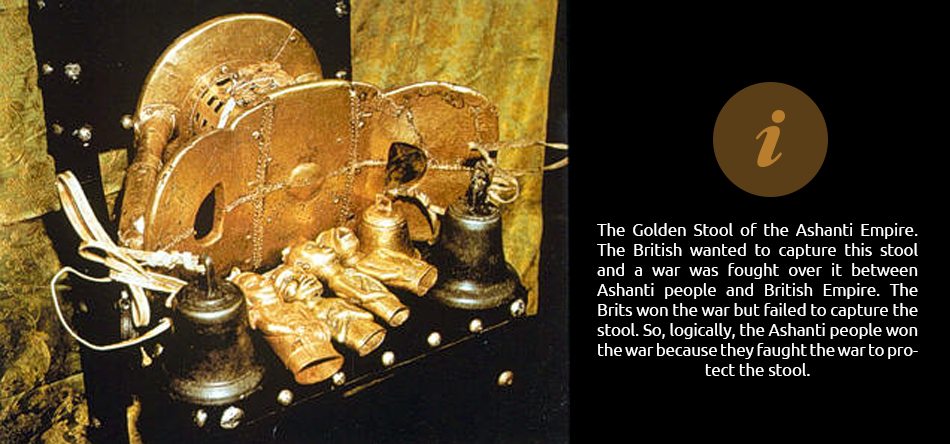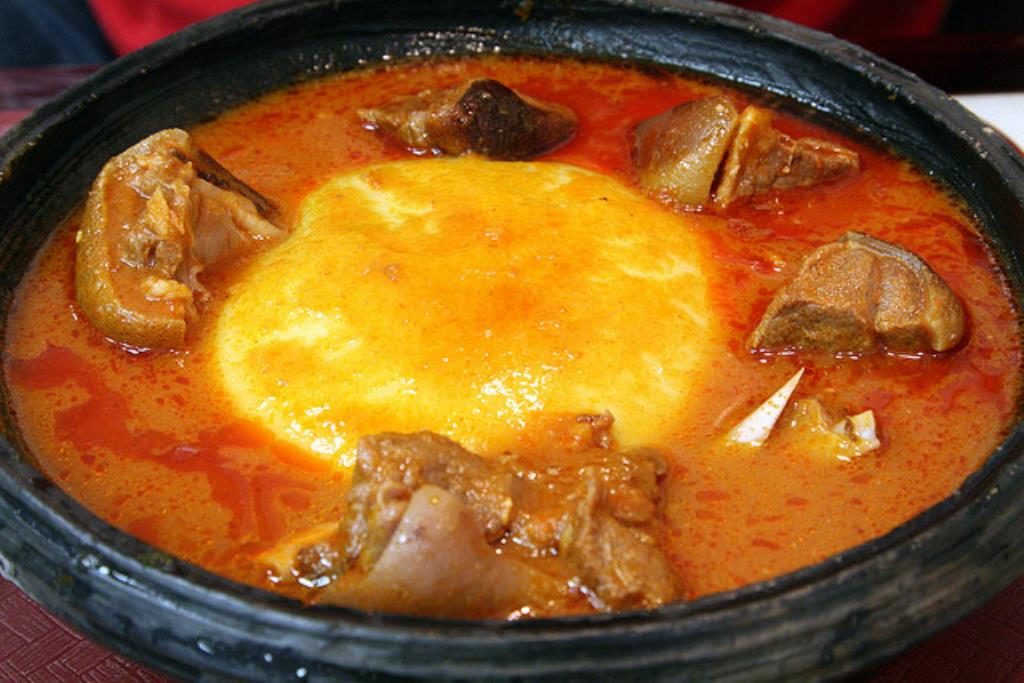In Ghana, one of the more dominant tribes in the West African country is the Ashanti tribe. As with most tribed, the Ashantis are a unique people in a lot of ways stemming from their rich history to their language, foods, traditional attires and culture in general. Want to learn more about this fascinating tribe, why not read on and be amazed at what you will discover.
Rich History
The Ashanti (Asante, Asanti) tribe can currently be found in central Ghana of western Africa. They are the major ethnic group of the Akans (Ashanti and Fanti) people in Ghana. Before Ghana, was Gold Coast, a nation dominated by the Akans with their capital in Kumasi.
Ancient Ashantis lived together in huts built around a courtyard. The head of the household is usually the oldest brother living in the clan, who is picked by the elders. He is called the Father or Housefather. The family is of utmost importance to the Ashanti tribe, especially the mother’s family. A child is believed to have inherited the mother’s flesh and blood, and the father’s soul.
SEE ALSO: Remembering Kwame Nkrumah With These 20 Quotes
Talking drums are important to the Ashantis. They are used to learn their language. A boy is taught to use the talking drum by his mother’s brother.
The Ashantis are also known for a variety of arts and crafts especially weaving. Only Ashanti men are allowed to weave, although the women may pick the material used for the weave and spin it. They are also known for pottery, metal-casting and wood carving.
One of the most important symbols of the Ashanti is the golden stool. The golden stool has never been sat on by anyone, neither has it touched the ground. According to a legend, Okomfo Anokye a High Priest and one of the two chief founders of the Asante Confederacy, caused the stool to descend from the sky and land on the lap of the first Asante king, Osei Tutu.
The stool value is further reinforced as it is guarded with the utmost security and usually placed on an animal skin or another stool. The golden stool which is said to represent the worship of ancestors and tending to their well-being. Moreso, in the Ashanti tribe, the stool is only brought out during grand occasions.
Slavery In Ashanti
Historically, Ashanti people were sold to slavery. These slaves came about through warfare and battles in which they came victorious. The aim of slavery varied as different slave masters acquired slaves either to increase wealth or intermarry. On a larger scale, slaves could also be used for sacrifice during funerals ceremonies. This was a practice done in accordance with the belief that slaves would follow their masters into the afterlife.
Ashanti slave masters were known to treat slaves in a humane manner to the point that slaves could own slaves themselves. Any slave master who was found to treat slaves badly was frowned upon by the community. The slaves also had the chance to request a change of their master if they so believe they have been constantly mistreated.
Because of the matrilineal type of culture the Ashanti people, the slave master usually preferred to marry their slaves. This was because in a family setting the wife’s elder brother had control over his sister’s children especially the males rather than the children’s own father. The slave masters who wanted adequate control of their own children would prefer to marry a slave girl who didn’t have any family who could intrude in his family’s affairs.
Food / Local Cuisine
As with other tribes in Ghana, the Ashantis do have their own staple delicacies that leave visitors or guests craving for more. Whether at home, events of traditional functions, the local food play a major role in entertainment and keeping the people jolly and happy. There are four major dishes the Ashanti tribe is known for and they include: Fufu and Goat light soup, Ampesi and kontomire stew, Mpoto Mpoto, and ‘Etɔ’ (Mashed Plantain):
1. Fufu and Goat light soup
Among the Akans, fufu is a staple food that is best enjoyed with the Goat light soup. The preparation of this meal though easy to make needs advance processing before it can be achieved. The process thus involves marinading the meat to be used overnight. After this, the meat can now be incorporated with grounded local spices which are boiled with red oil to add more aroma and flavour to the soup.
2. Ampesi and kontomire stew
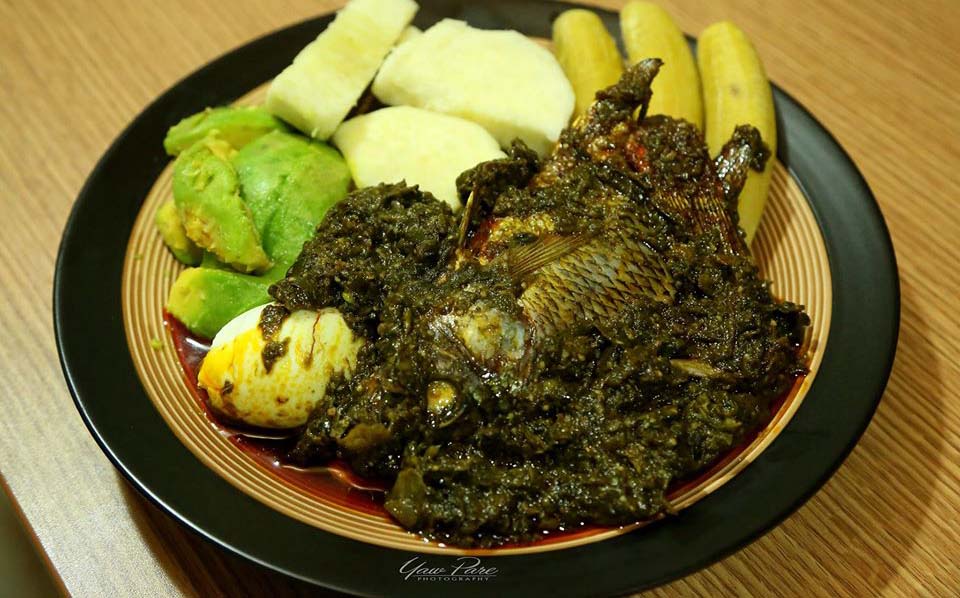
This is also an easy meal to prepare in which the Kontomire leaves are paramount. The leave is boiled together with local spice then eaten with boiled unripe plantain or yam. The meal can be eaten with fried fish. The Tilapia fish is most preferred to work well with the meal. This meal is also a highly nutritious one.
3. Mpoto Mpoto
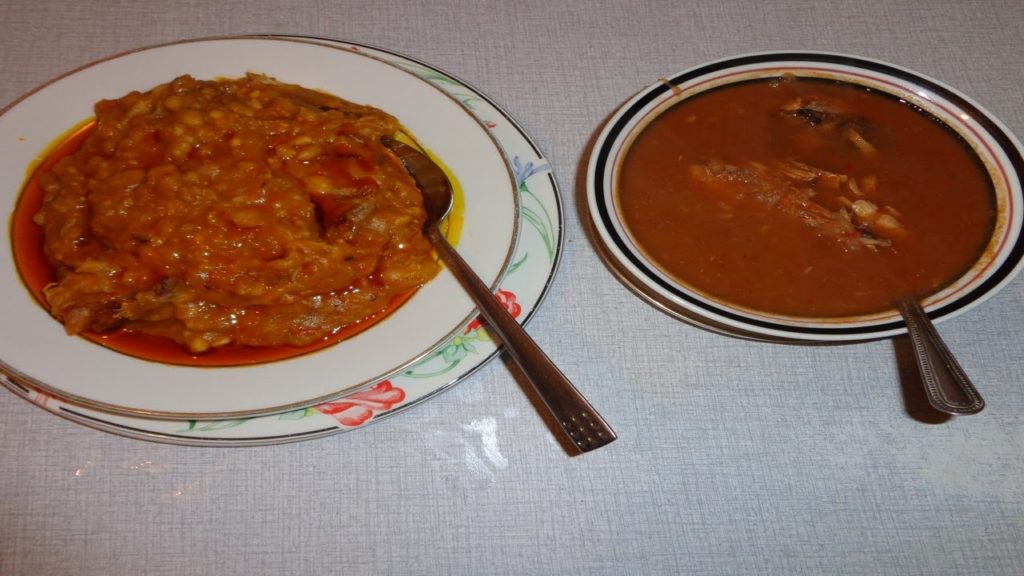
This food is prepared from mashed cocoyam. Though the meal can be prepared in various styles, it is highly nutritious as well as delicious.
4. ‘Etɔ’ (Mashed Plantain)
From the name its simple to imagine what this would taste like…Plantain maybe? You are right. This food is made by mashing half-ripe boiled plantain and mixing with red oil. The food is further enhanced by the addition groundnut which can be sprinkled on the mashed plantain alongside avocado and boiled egg.
SEE ALSO: 7 Beautiful African Traditional Wedding Attires
Language, Culture and Traditional Attire
They speak the Twi or Asante Twi dialect, one of the major dialects in Ghana today. This language is thus spoken by more than nine million people as a first or second language.
In terms of their traditional attire, Ashantis are also popular for the Kente cloth. Kente comes from the word ‘kenten’ which means ‘basket’ because the initial Kente weavers used rafia palm to make clothes that looked like a basket.
Did You Know?
1. In 1896 during a war against Britain, the Ashanti people allowed King Prempeh I of the Ashanti kingdom to be deported because they feared the alternative would result in the loss of their golden stool.
2. The Ashantis have a lot in common with Jamaicans including language and culture similarities owing to the slave trade that saw many Ghanaians taken to Jamaica and Barbados. The Jamaican flag is also said to be inspired by the Ashanti King’s Kente.
3. The Kente cloth which has become a popular fashion statement was once worn only by Ashanti kings and reserved only for joyous occasions.
SEE ALSO: 8 Delicious Ghanaian Dishes You Must Try
4. The Kente material and design reached global recognition as it was featured in the “Black Panther Movie,” as part of the attire worn by King T,challa played by Chadwick Boseman.”
